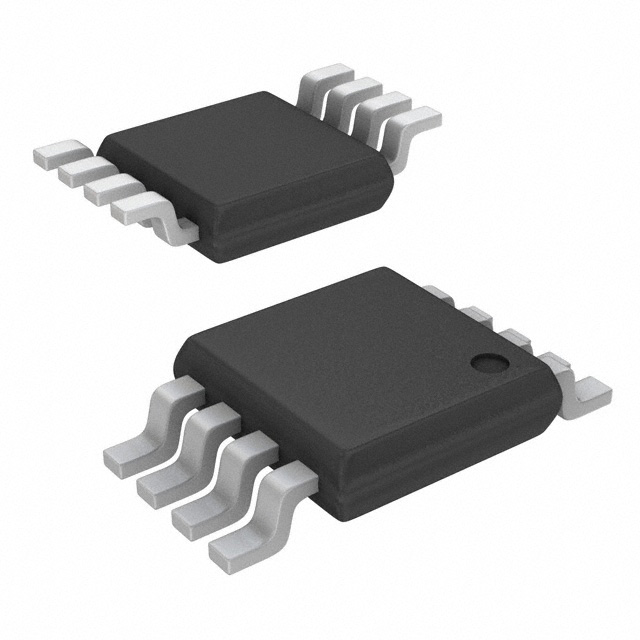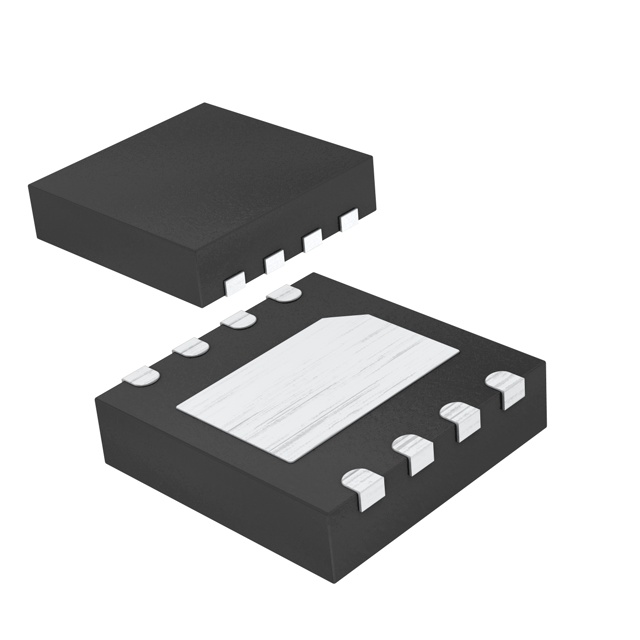

A Complete Guide to Integrated Amplifier
Catalog
Description of Integrated AmplifierWhat is an integrated Amplifier?Integrated Amplifier WorkingIntegrated Amplifier in Hi-Fi Audio SystemsTypes of Integrated AmplifiersHow to Select an Integrated Amplifier?Advantages and DisadvantagesApplications of Integrated AmplifierIn summaryFrequently Asked QuestionsRelated ArticlesDescription of Integrated Amplifier
Integrated amplifiers are super important in the audio world and come in all sorts of shapes and sizes. Basically, this type of amplifier combines a preamplifier and a power amplifier into one handy device, which makes connecting to your audio gear a breeze. You’ll find these amplifiers pretty commonly in A/V receivers, stereo systems, home theater setups, and other audio equipment. They might sound like they’re a specialized part of the gear compared to regular amplifiers. In this article, we’ll take a look at what an integrated amplifier is, how it works, and where it’s used.
What is an integrated Amplifier?
An integrated amplifier is a cool piece of tech in a Hi-Fi audio system that brings together an audio preamplifier and a power amplifier all in one unit. It usually includes things like AM/FM radio, a phono stage, tone controls, and attenuation. This setup makes things simpler, cuts down on the number of components you need, and generally improves audio performance since both the preamp and power amp are designed to work together. Most modern audio amplifiers have multiple inputs for all sorts of audio devices, like DVD players, CD players, and more.

Integrated Amplifier
Integrated Amplifier Working
An integrated amplifier has two main parts: the preamplifier and the power amplifier. First off, the preamp takes a weak audio signal from something like an AM/FM receiver, a turntable, or a DAC, and boosts it up to line level. Then, that signal gets sent over to the power amplifier.
The power amplifier kicks it up a notch, turning that signal into a strong audio signal called the speaker-level signal, which is what drives the speakers. So, that's how an integrated amplifier works to enhance those signals. Nowadays, most modern integrated amplifiers come with extra features right out of the box, like a built-in DAC and a bunch of input options, including input selectors, Wi-Fi, Bluetooth, and more.
Integrated Amplifier in Hi-Fi Audio Systems
An integrated amplifier is a key player in Hi-Fi audio systems, bringing together both a preamplifier and a power amplifier in one unit. You can see how it fits into the Hi-Fi audio system diagram below.

Integrated Amplifier in Hi-Fi Audio Systems
In the diagram above, all the inputs go into the amplifier, and a selector chooses which one to use. The pre-amplifier and amplifier are combined into one amplifier block, while different speakers and their crossovers come together in a speaker block. The components of a Hi-Fi audio system mainly include inputs, processes, and outputs, which I'll explain below.
Inputs: For the Hi-Fi audio system, the inputs can be things like microphones, MP3 players, CD players, cassette players, DVD players, radio tuners, turntables, and mini-disk players. The music on some of these media gets encoded and turned into electrical signals by the different players.
Process: The electrical signals get processed by various amplifiers from different sources. The pre-amplifier adjusts the signal by tweaking the tonal equalization, picking which input to use, providing volume and balance controls, and often powering a headphone jack. Then, the amplifier steps up the output power, boosting both voltage and current.
The preamplifier in an integrated amplifier is in charge of processing and managing the audio signal before it gets strengthened by the power amplifier. Some main features of the preamplifier include tone control, volume control, and input selection. A high-quality preamplifier really enhances the audio performance of the system by cutting down noise and distortion while giving you better control over the audio output.
The power amplifier in an integrated amplifier is responsible for cranking up the audio signal to a level that can actually be played through the speakers. The quality and performance of the power amplifier are super important for the system’s audio performance since it provides accurate and clean amplification with minimal distortion. Plus, some integrated amplifiers come with multiple power amplifier stages for more flexibility and control over the audio output.
Outputs: In the output section, the speakers take the electrical signals from the amplifier and turn them into sound. The bigger speaker handles low frequencies (bass), while the smaller speaker deals with the higher frequencies. A passive crossover splits the signal into different frequencies, making sure the right signals go to the right speakers.
Integrated amplifiers can really vary in performance and quality, from high-end models with awesome features like several power amplifier stages, specialized power supplies, and top-notch components. Some even support cool extras like Bluetooth connectivity, streaming capabilities, and digital inputs, giving you more flexibility and convenience when designing your system.=
Types of Integrated Amplifiers
Integrated amplifiers come in a bunch of different types, each with its own unique features and abilities. Let’s go over some of the most common ones.
Stereo Integrated Amplifiers
These are the most popular type of integrated amplifiers. They mix a preamplifier and a power amplifier into one handy device. They’re mainly made to power two speakers—one for the left channel and one for the right. You’ll mostly find stereo integrated amplifiers used for enjoying music in stereo.

Stereo Integrated Amplifiers
Home Theater Integrated Amplifiers
These integrated amplifiers, often called A/V receivers, are used to power a bunch of speakers and provide surround sound for your TV shows and movies. They come with a power amplifier, a preamplifier, and multiple inputs and outputs to connect to other devices like Blu-ray players, game consoles, or TVs.

Home Theater Integrated Amplifiers
Tube Integrated Amplifiers
Tube integrated amplifiers use vacuum tubes to boost the signal. They give off a more natural and warmer sound compared to solid-state amplifiers. Audiophiles often pick these because they really care about sound quality over convenience.
Digital Integrated Amplifiers

Digital Integrated Amplifiers
Digital integrated amplifiers use digital signal processing to amplify the signal. They’re usually more compact and energy-efficient than analog amps and come with cool features like network connectivity and room correction.
| Integrated Amplifier | Power Amplifier |
| An electrical device that combines a preamplifier and a power amplifier is known as an integrated amplifier. | A remarkable electronic device designed to amplify the signal's strength with raw power to one or more speakers is known as a power amplifier. |
| Integrated amplifiers combine two audio devices into one unit, rather than being separate audio systems. | A power amplifier is a standalone audio device that contains a single audio component within its enclosure. |
| This amplifier integrates both preamp and power amplifier functions to enhance the audio signal. | The function of the power amplifier is to amplify an audio signal for driving speakers. |
| Integrated amplifiers are less powerful and cannot drive large speakers and subwoofers as effectively as power amplifiers. | Power amplifiers are very powerful and drive large speakers and subwoofers much more efficiently compared to integrated amplifiers. |
| The amplified audio signals in this amplifier are not as strong as those amplified by power amplifiers. | Amplified audio signals in power amplifiers are stronger compared to those amplified by integrated amplifiers. |
| The integrated amplifier uses less space and is suitable for compact configurations. | The power amplifier consumes more space and is suitable for custom configurations. |
| Integrated amplifiers offer audio and bass control. | Audio and bass control is not available. |
| Power output ranges from moderate to high. | Power output is high for driving demanding setups. |
| It is integrated with different audio sources. | This amplifier is specialized mainly for raw audio amplification. |
| Its sound quality is balanced. | This amplifier's sound quality is raw and uncolored output. |
| Perfect for small to medium-sized rooms. | Appropriate for larger and open spaces. |
| Integrated amplifiers have limited expandability. | Power amplifiers have flexible expandability. |
| It has a simple setup and an easy-to-use interface. | This amplifier requires advanced knowledge for setup. |
| The integrated amplifier is affordable. | Power amplifiers are expensive. |
| Its maintenance and troubleshooting are simple. | It requires more maintenance due to its complexity. |
How to Select an Integrated Amplifier?
When you’re picking out an integrated amplifier, there are a few key things to think about. First, check if it’s compatible with the other components in your system. You’ll also want to consider the quality of the preamplifier, the size, your budget for the power amplifier stages, and how well the device is built and designed.
Some integrated amplifiers come with specific performance features, like high power output or low noise focus, so that’s worth keeping in mind too.
Start by looking at the output power because that tells you how much power it can send to your speakers. Also, think about how many and what types of inputs and outputs you need.
Ultimately, choose an integrated amplifier for your home audio system based on what you need and your budget. Keep in mind things like connectivity options, build quality, and power output.
Advantages and Disadvantages
Advantages of Integrated Amplifiers:
- They’re compatible with a wide range of speakers.
- Super convenient and flexible to use.
- They offer a great auditory experience for most listeners.
- Perfectly designed for small to medium-sized spaces.
- Set up is a breeze, thanks to integrated controls and functions.
- They have sleek and compact designs.
- Maintenance is really easy since there are fewer components to deal with.
- You need fewer interconnects and cables.
- They take up less space.
- They’re flexible and work well with passive speakers.
- They’re cost-effective!
Disadvantages of Integrated Amplifiers:
- They don’t give as much flexibility as separate components.
- There might be limitations in power output.
- They have limited upgrade potential.
- The power supply might be shared between channels.
- They can have fewer inputs and power ratings.
- Prices can vary depending on design and features.
- Sometimes, they might strain a single loudspeaker.
Applications of Integrated Amplifier
Integrated amplifiers have a bunch of important applications, including:
- They’re essential for any home audio system.
- They can power the front right and left speakers in home theater setups.
- These amplifiers are great for hi-fi systems, effectively driving high-quality speakers.
- Perfect for music systems, they can power floor-standing or bookshelf speakers to deliver a full and rich sound.
- Integrated amplifiers are used in commercial sound setups, letting users plug in microphones and connect speakers for a complete system.
- They’re super popular in home audio systems because they’re compact, convenient, and easy to use.
- Audiophiles love them for music listening.
In summary
Integrated amplifiers are key players in Hi-Fi audio systems, combining both pre-amplification and power amplification in one unit. The performance and quality of the preamplifier and power amplifier stages are super important for the overall audio experience. Higher-quality components and features give you more flexibility and control. When picking an integrated amplifier, make sure to consider things like audio quality, compatibility, and extra features to get the best sound possible.
And here’s a question for you: what is a preamplifier?
Frequently Asked Questions
What does an integrated amplifier do?
An integrated amplifier (also known as a pre/main amp) is an electronic device that combines an audio preamplifier and a power amplifier into one unit, instead of keeping them separate. Most modern audio amplifiers are integrated and come with multiple inputs for devices like CD players, DVD players, and other auxiliary sources.
Which is better: integrated or power amplifier?
If you’re looking for more power and extra features, then a power amp is the way to go. But if you want something that’s not as powerful yet still has enough capability to fit nicely into your system, an integrated amplifier can be ideal.
Can you connect a subwoofer to an integrated amplifier?
Yes, you can! The preferred method works even if your preamp doesn’t have special subwoofer outputs. You just need a subwoofer that can take a “high level” (or “speaker level”) input. With this setup, you connect the subwoofer to the back of your amp right where you plug in your speakers.
Do I need a preamp if I have an integrated amplifier?
Not really! An integrated amp has the extra circuitry for the preamp function, which includes a gain knob and often tone and volume controls. So, it makes a lot of sense to use an integrated amplifier instead of two separate units for the preamp and power. It’s usually cheaper, easier to set up, and takes up less space.
Does an integrated amp need a DAC?
Not really! A DAC takes a digital stream and converts it into a line-level stereo analog signal, just like the output from your CD player, tuner, phono stage, or even a cassette deck! So, if you can connect a CD player or tuner to your preamp or integrated amp, you can definitely connect a DAC to it too.
How long do integrated amplifiers last?
A good integrated amp can last at least 20 years. The parts that usually fail first are the capacitors, but those are pretty inexpensive to replace—even in most high-end amps!
Can I use a power amp with an integrated amp?
Yes, you can! You can use an integrated amplifier as a preamp and add a separate power amplifier. Just keep a few things in mind: Make sure your integrated amplifier has a preamp output (often labeled as “pre-out”).
Related Articles
Introduction to CR1616 Battery Equivalent
Subscribe to JMBom Electronics !












